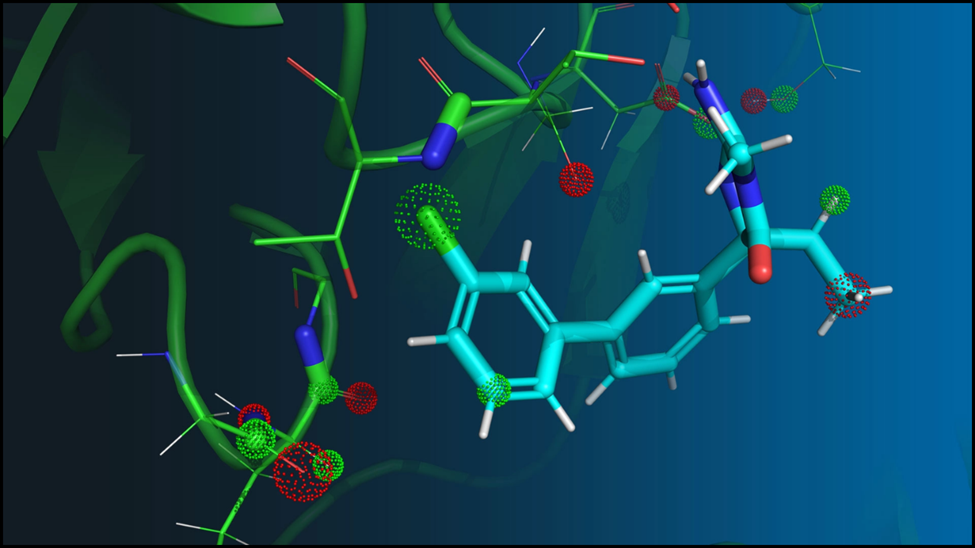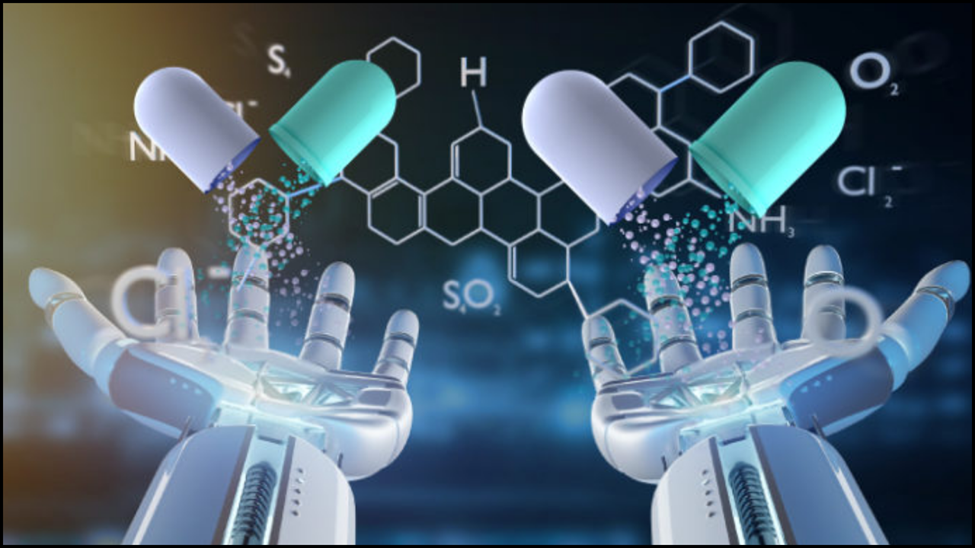The traditional drug discovery pipeline is notoriously lengthy, expensive, and riddled with high failure rates. It can take over a decade and billions of dollars to bring a single new drug to market. Enter computational drug discovery, a revolutionary approach leveraging the power of advanced computing, artificial intelligence (AI), and sophisticated algorithms to streamline and accelerate every stage of this complex process. As of mid-2025, computational drug discovery is not just an adjunct; it is fundamentally transforming scientific advancements in medicine.
Computational Drug Discovery: A Digital Revolution
Computational drug discovery involves the application of computer-aided design, modeling, and simulation techniques to identify, design, and optimize potential drug candidates. Instead of relying solely on labor-intensive, costly, and often serendipitous wet-lab experiments, researchers can now virtually screen millions of compounds, predict their interactions with biological targets, and assess their properties in silico (via computer simulation).

This paradigm shift is driven by the sheer volume of biological and chemical data now available, coupled with the exponential increase in computational power. Computational drug discovery integrates principles from chemistry, biology, physics, and computer science to create a more efficient and targeted approach to finding new medicines. The ultimate goal of computational drug discovery is to reduce the time, cost, and risk associated with traditional drug development, bringing life-saving therapies to patients faster.
Computational Drug Discovery in Scientific Research: Accelerating Breakthroughs
The impact of computational drug discovery on scientific research is profound. It has become an indispensable tool, enabling researchers to:
1. Accelerate Target Identification and Validation
By analyzing vast genomic, proteomic, and disease-related datasets, computational drug discovery can pinpoint potential therapeutic targets with greater precision, shortening the initial, crucial phase of research.
2. Rapidly Screen Compound Libraries
Virtual screening allows the rapid evaluation of millions, even billions, of chemical compounds against a specific target. This drastically reduces the number of compounds that need to be synthesized and experimentally tested, saving immense resources and time. This is a cornerstone of efficient computational drug discovery.

3. Optimize Lead Compounds
Once promising “hit” compounds are identified, computational drug discovery techniques like molecular dynamics simulations, quantum mechanics calculations, and ADMET (Absorption, Distribution, Metabolism, Excretion, and Toxicity) predictions help optimize their binding affinity, selectivity, and pharmacokinetic properties, transforming them into viable drug candidates.
4. Facilitate Drug Repurposing
It can identify existing drugs that might be effective against new diseases by analyzing their molecular interactions with different targets. This “repurposing” can significantly cut down development timelines as these drugs have already undergone safety testing.
5. Design de novo Molecules
Beyond screening existing libraries, advanced computational drug discovery methods can even design entirely new molecules from scratch, tailored to specific therapeutic criteria.
These capabilities mean that scientific research in drug development is no longer a slow, arduous crawl but a much faster, more intelligent exploration of chemical space. Every step of the process is impacted by the efficiency of computational drug discovery.
AI and Drug Discovery: The Intelligent Core of the Revolution
Artificial Intelligence (AI) and Machine Learning (ML) are at the heart of the latest advancements in computational drug discovery. AI algorithms can:

1. Analyze Massive Datasets
Process and derive insights from colossal amounts of biological, chemical, and clinical data, identifying patterns and relationships that human analysis might miss.
2. Predict Molecular Behavior
Use deep learning models to predict how molecules will interact with biological targets, their stability, toxicity, and efficacy with increasing accuracy.
3. Generate Novel Molecules
Generative AI models can propose entirely new molecular structures that are likely to have desired properties, accelerating the de novo design process.
4. Optimize Experimental Design
AI can guide experimental workflows, suggesting the most promising compounds to synthesize and test, thereby maximizing research efficiency.
The integration of AI has ushered in a new era of predictive power, significantly enhancing the capabilities of computational drug discovery and making the process smarter and more efficient.
Technology: The Enabler of Computational Drug Discovery
The rapid evolution of technology is the primary enabler of computational drug discovery. High-performance computing (HPC) clusters, cloud computing, and specialized software platforms are essential for running complex simulations and analyzing massive datasets. Advanced visualization tools allow researchers to interact with molecular structures and simulations in intuitive ways. Furthermore, the development of sophisticated algorithms in fields like cheminformatics and bioinformatics provides the backbone for predictive modeling in computational drug discovery. Without these technological advancements, the current scale and precision of computational drug discovery would be impossible.

Buy Drug Discovery Papers: Accessing Cutting-Edge Insights
For researchers, industry professionals, or even curious individuals wanting to delve deeper into the methodologies and findings of computational drug discovery, accessing peer-reviewed research papers is crucial. To buy drug discovery papers specifically on computational methods:
- Publisher Websites: Major scientific publishers (e.g., Elsevier, Springer Nature, Wiley, ACS Publications) offer direct purchase options for individual articles or entire journal issues.
- Academic Databases: Platforms like PubMed, Scopus, Web of Science, and Google Scholar provide search functionality. While many articles may require institutional subscriptions for full access, some are open access.
- Book Chapters/Edited Volumes: Comprehensive books on computational drug discovery often contain chapters written by leading experts, providing detailed methodological insights and case studies. These can be purchased from academic book retailers.
- ResearchGate/Academia.edu: Researchers sometimes upload preprints or accepted versions of their papers to these platforms, which may be accessible for free or via direct request to the author.
Always check for open-access options first, as many journals are moving towards making research freely available. For instance, the journal Drug Design, Development and Therapy is an open-access peer-reviewed journal publishing research on targeted drug design, including molecular studies relevant to computational drug discovery.
How Computational Drug Discovery Works: A Step-by-Step Overview
Computational drug discovery typically follows a series of integrated steps:
Step 1: Target Identification and Validation
Researchers identify a specific biological target (e.g., a protein or enzyme) associated with a disease. Computational drug discovery tools analyze genomic and proteomic data to prioritize targets.
Step 2: Virtual Screening
Large chemical libraries are screened in silico against the identified target. Techniques like molecular docking predict how well a compound will bind to the target's active site.
Step 3: Lead Identification and Optimization
Promising compounds (hits) from virtual screening are further analyzed. Computational drug discovery methods simulate their interactions, predict ADMET properties, and guide chemical modifications to improve potency, selectivity, and safety.
Step 4: De Novo Drug Design
In some cases, instead of screening existing compounds, computational drug discovery algorithms are used to design entirely new molecules from scratch, optimizing them for specific binding characteristics.
Step 5: Preclinical and Clinical Prediction
Computational drug discovery can predict potential toxicity or adverse effects earlier in the development process, reducing costly failures in preclinical and clinical trials. AI models analyze past clinical trial data to optimize trial design.
This iterative process, powered by advanced algorithms and high-performance computing, significantly accelerates the traditional drug discovery timeline. Notable examples of drugs benefiting from computational methods include Captopril, Dorzolamide, and Saquinavir.
Find Computational Drug Papers: Key Resources
To find computational drug papers, leverage these resources:

1. PubMed
Your primary resource for biomedical research. Use keywords like “computational drug discovery,” “CADD,” “molecular docking,” “virtual screening,” “AI drug discovery,” and “machine learning in drug discovery.”
2. Google Scholar
Offers a broader search across scholarly literature, often linking to free versions or institutional access.
3. Specialized Journals
Look for journals specifically focused on computational chemistry, bioinformatics, cheminformatics, and pharmaceutical research, such as Journal of Chemical Information and Modeling, Journal of Medicinal Chemistry, Molecular Informatics, and Drug Discovery Today. Several special issues, like “Latest Advances in Computational Drug Discovery” by MDPI, also consolidate recent research.
4. Conference Proceedings
Major conferences in cheminformatics, AI, and drug discovery often publish proceedings that contain cutting-edge research.
IBM Drug Discovery: Pioneering AI in Pharma
IBM has been a significant player in the application of AI and computational drug discovery. While their most famous initiative, IBM Watson for Drug Discovery, has evolved, IBM continues to invest in AI and cloud solutions that support the pharmaceutical industry. As of mid-2025, IBM's role is to provide robust data management, secure cloud environments, and advanced AI platforms that enable pharmaceutical companies and researchers to conduct computational drug discovery more effectively. They focus on leveraging AI to analyze large datasets, identify hidden patterns, and predict the likelihood of success for various drug candidates, thereby streamlining drug discovery pipelines. Companies are integrating IBM's AI technologies early in their R&D processes, leveraging partnerships to enhance their research outcomes.

US Medical Technology and Drug Discovery: A Hub of Innovation
The US medical technology sector is a global leader in driving advancements in drug discovery, largely due to substantial investments in research and development, a robust venture capital ecosystem, and leading academic institutions. The integration of computational drug discovery has been a major trend, with numerous biotech startups and pharmaceutical giants based in the US embracing these technologies.

The US leads in the application of AI, genomics, and advanced analytics to drug development. Government funding agencies like the National Institutes of Health (NIH) actively support computational drug discovery research. Predictions for 2025 indicate an inflection point for AI drug discovery in the US, with a shift towards hybrid AI-driven and quantum-enhanced approaches. Companies like Model Medicines are using generative AI to expand chemical space, achieving high hit rates in in vitro assays for antiviral drug discovery. The synergy between academic breakthroughs, cutting-edge medical technology companies, and a strong regulatory framework positions the US at the forefront of the computational drug discovery revolution, continuously pushing the boundaries of what's possible in finding new treatments.
Drug Discovery: The Accelerated Future
The future of drug discovery is undeniably intertwined with computational drug discovery. This powerful methodology is reshaping how we approach finding new medicines, moving from a trial-and-error approach to a more precise, data-driven, and intelligent strategy. As AI algorithms become more sophisticated, computational power continues to grow, and our understanding of biological systems deepens, computational drug discovery will increasingly be the driving force behind breakthroughs in treating diseases and improving global health. The ability to simulate, predict, and design in silico is making drug discovery faster, cheaper, and ultimately, more successful.








